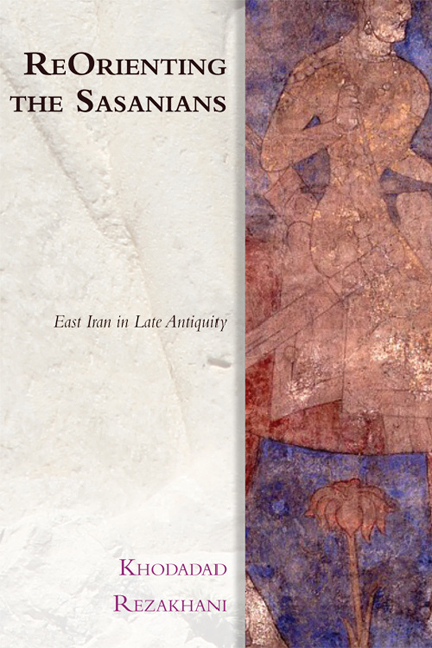Book contents
- Frontmatter
- Contents
- List of Illustrations
- Acknowledgements
- Series Editor's Preface
- Maps
- Preface
- Introduction
- 1 The Sasanians and the Sistanis
- 2 The Kushans and the Sasanians
- 3 The Kushano-Sasanians in East Iran
- 4 The Iranian Huns and the Kidarites
- 5 The Alkhans in the Southern Hindu Kush
- 6 The Hephthalite ‘Empire’ and its Successors
- 7 Sogdiana in the Kidarite and Hephthalite Periods
- 8 The Nēzak and Turk Periods
- 9 Tokharistan and Sogdiana in the Late Sasanian Period
- 10 General Conclusions and Postscript
- 11 Epilogue and Excursus on the Shahnameh
- Bibliography
- Index
2 - The Kushans and the Sasanians
Published online by Cambridge University Press: 07 December 2017
- Frontmatter
- Contents
- List of Illustrations
- Acknowledgements
- Series Editor's Preface
- Maps
- Preface
- Introduction
- 1 The Sasanians and the Sistanis
- 2 The Kushans and the Sasanians
- 3 The Kushano-Sasanians in East Iran
- 4 The Iranian Huns and the Kidarites
- 5 The Alkhans in the Southern Hindu Kush
- 6 The Hephthalite ‘Empire’ and its Successors
- 7 Sogdiana in the Kidarite and Hephthalite Periods
- 8 The Nēzak and Turk Periods
- 9 Tokharistan and Sogdiana in the Late Sasanian Period
- 10 General Conclusions and Postscript
- 11 Epilogue and Excursus on the Shahnameh
- Bibliography
- Index
Summary
INTRODUCTION
The Kushan Empire was the most noteworthy power that came to existence in East Iran in the pre-Islamic period. Through their conquest of Tokharistan and eventual crossing of the Hindu Kush and invasion of northern India, the Kushans established a pattern that was followed by almost all their successors, from the Kidarites to the Alkhans, Turks, and early Islamic powers. By adopting the local cultural offerings of their territories, from the Bactrian language to Buddhism, and through engendering new ideas such as their gold coinage, they for the first time unified both sides of the Hindu Kush and created a coherent empire. Their influence lasted for many centuries after their demise, and their empire became a blueprint for many succeeding states that continually strove to control both north and south sides of the Hindu Kush, even down to the Ghaznavid period. The Kushan power, and their creation and dominance of East Iran, made them the greatest challenge to the Sasanians, and possibly their greatest influence as well.
THE KUSHAN EMPIRE IN EAST IRAN
In his description of the career of Ardashir I, al-Tabari mentions that after the conquest of Sistan and Khurasan up to Khwarazm, the Sasanian founder received envoys from the kings of ‘the Kūshan, of Tūrān, and of Makrān’ (al-Tabari I.820). Ardashir's son, Shapur I, in his famous inscription at Ka‘aba-īaZardušt (ŠKZ) also claims to be the master of ‘Kushanshahr, up to Pushkabur’, the region of modern Peshawar in ancient Gandhara and the traditional stronghold of powers which controlled northwestern India. Most scholars now would agree that while Shapur's claim might be just an exaggeration, al-Tabari's suggestion is a case of historical anachronism and a factual impossibility.
But what was Kushanshahr and who were the Kushans, about the control of whose lands Shapur boasted and the tribute of whose king was of such importance? In the usual narratives of Iranian history, whether traditional or modern, Kushans do not feature significantly, if indeed at all. The name is nearly unknown to Islamic historians, who appear to have only a vague idea of the Kushans’ identity and possibly only knew of the term as a geographical designation rather than a historic dynasty.
- Type
- Chapter
- Information
- ReOrienting the SasaniansEast Iran in Late Antiquity, pp. 46 - 71Publisher: Edinburgh University PressPrint publication year: 2017



